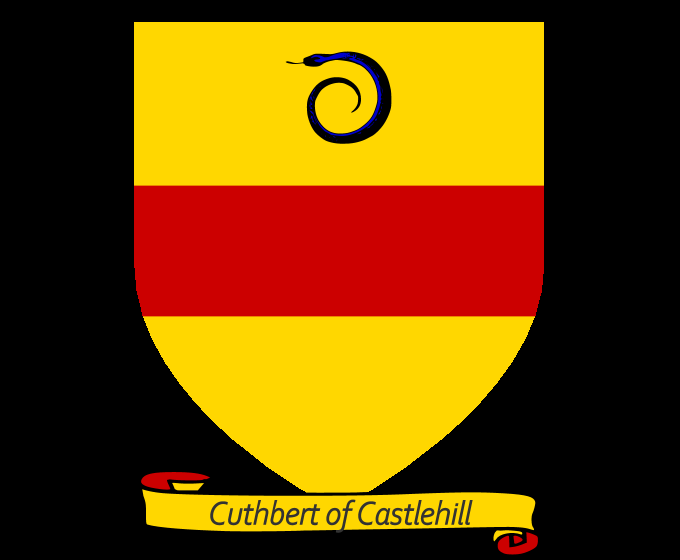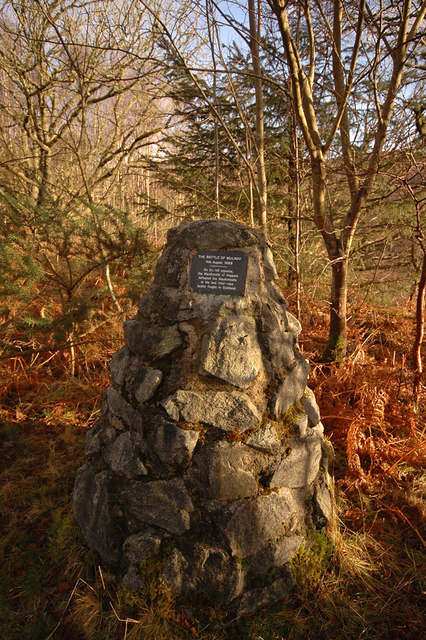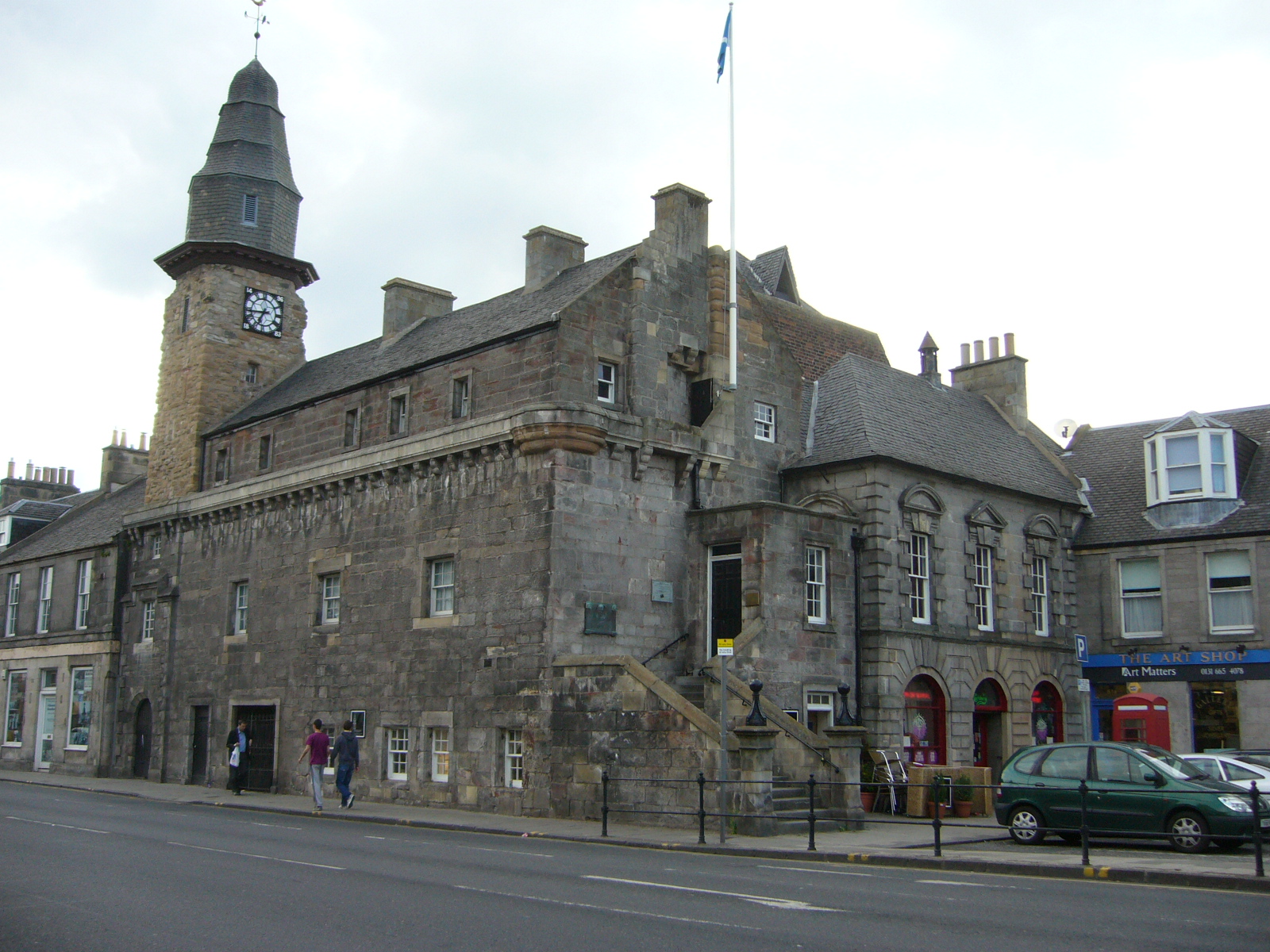|
Lord Lewis Gordon
Lord Lewis Gordon (22 December 1724 – 15 June 1754), also known as Lord Ludovick Gordon, was a Scottish nobleman, naval officer and Jacobite, remembered largely for participating in the Jacobite rising of 1745, during which Charles Edward Stuart appointed him Lord-lieutenant of Aberdeenshire and Banffshire. During the rising Gordon and his agents raised a large number of men, often through impressment, from the estates of his brother the Duke of Gordon: the north-eastern counties ultimately provided up to a quarter of the Jacobite army's rank and file. After the failure of the campaign he escaped to France, dying at Montreuil in 1754. Life Gordon was the fourth son of Alexander Gordon, 2nd Duke of Gordon, and Lady Henrietta Mordaunt, daughter of Charles Mordaunt, 3rd Earl of Peterborough. As a younger son, he used 'Lord' as a courtesy title. His father, as Marquis of Huntly, had fought on the Jacobite side in the 1715 rising, but later obtained a government pardon. Taking ... [...More Info...] [...Related Items...] OR: [Wikipedia] [Google] [Baidu] |
John Alexander (painter)
John Alexander (1686 – ) was a Scotland, Scottish Painting, painter and engraver of the 18th century. He studied in Italy under Giuseppe Bartolomeo Chiari. Life Alexander was the son of a doctor from Aberdeen. The painter George Jamesone was his paternal great-grandfather. He spent some time in London before going to Rome in 1711. There he studied under Giuseppe Bartolomeo Chiari, Giuseppe Chiari and received commissions from the exiled Stuart court. Following his return to Scotland in 1720 he was commissioned by the Alexander Gordon, 2nd Duke of Gordon, 2nd Duke of Gordon (whom he had probably first met in Italy) to decorate a staircase at Gordon Castle with a painting depicting the Rape of Proserpine. This was based on a work by his master, Chiari, in the Palazzo Barberini.Long 1842–4 Alexander's work at the castle was later destroyed, but his sketch for the work survives in the collection of the National Gallery of Scotland. Many of his clients, including Gordon, were Ja ... [...More Info...] [...Related Items...] OR: [Wikipedia] [Google] [Baidu] |
Royal Navy
The Royal Navy (RN) is the naval warfare force of the United Kingdom. It is a component of His Majesty's Naval Service, and its officers hold their commissions from the King of the United Kingdom, King. Although warships were used by Kingdom of England, English and Kingdom of Scotland, Scottish kings from the early Middle Ages, medieval period, the first major maritime engagements were fought in the Hundred Years' War against Kingdom of France, France. The modern Royal Navy traces its origins to the English Navy of the early 16th century; the oldest of the British Armed Forces, UK's armed services, it is consequently known as the Senior Service. From the early 18th century until the World War II, Second World War, it was the world's most powerful navy. The Royal Navy played a key part in establishing and defending the British Empire, and four Imperial fortress colonies and a string of imperial bases and coaling stations secured the Royal Navy's ability to assert naval superior ... [...More Info...] [...Related Items...] OR: [Wikipedia] [Google] [Baidu] |
Royal Scots (Jacobite)
The Jacobite Royal Scots, sometimes called the Royal-Ecossais, Lord John Drummond's Regiment or French Royal Scots, was a French military regiment made up mostly of Scottish Jacobite exiles. Formed in 1744 under a 1743 order, they are perhaps best known for serving in Scotland during the Jacobite rising of 1745. The regiment was disbanded in December 1762;McCorry, H. "Rats, Lice and Scotchmen: Scottish infantry regiments in the service of France, 1742-62" in ''Journal of the Society for Army Historical Research'', 297 (Spring 1996), 21 its men were mostly incorporated into Bulkeley's regiment of the Irish Brigade. Formation The regiment was formed in August 1744 by John Drummond, a younger son of the 2nd Duke of Perth; Perth was a Catholic and Stuart loyalist who was attainted for his role in the 1715 Jacobite rising. In May 1745 Charles Edward Stuart wrote of Drummond that it was "impossible that he can escape having his throat cut, for he is dayly affronting people," but ... [...More Info...] [...Related Items...] OR: [Wikipedia] [Google] [Baidu] |
Feudal Barony Of Castlehill
Baron of Castlehill is a title of nobility in the Baronage of Scotland in Inverness. Also called Auld Castlehill, it lies on the outskirts of the burgh of Inverness, between Culcabock, Drakies, and Culloden and it may be the hill where Macbeth's castle once stood. The lands were thought to have been granted to the Cuthbert family by King Kenneth I in the 950s, however the first known charter erecting Castlehill into a barony is from King James III on 23 July 1478. This charter was granted to William Cuthbert, grandson of George Cuthbert "who distinguished himself at the Battle of Harlaw". The barony was held by the Cuthbert family until 1802. When Lewis Cuthbert died in that year, the lands were sold and the title of baron became "dormant". Much of the land was eventually acquired by the Frasiers of Lovat and research performed by Dr. Richard Culbert of Muirton and Brian Hamilton has determined that the current holder of the title is Simon Fraser, 16th Lord Lovat.{{Cite jour ... [...More Info...] [...Related Items...] OR: [Wikipedia] [Google] [Baidu] |
Norman MacLeod (The Wicked Man)
Norman MacLeod of MacLeod (Scottish Gaelic: ''Tormod MacLeòid'') (1705–1772), also known as The Wicked Man (Scottish Gaelic: ''An Droch Dhuine''), was an 18th-century Scottish politician and the 22nd Chief of Clan MacLeod. Background Norman was the younger son of Norman MacLeod, the 20th Chief of Clan MacLeod. Norman's brother, John, was briefly the 21st Chief of Clan MacLeod as an infant after their father died in 1706. By 1707, John had also died, and Norman was left with the chiefdom at the age of 1. Norman was the Member of Parliament#United Kingdom, Member of Parliament for Inverness-shire (UK Parliament constituency), Inverness-shire between 1741 and 1754. He matriculated coat of arms, arms, and supporters, at Lyon Office, on 12 January 1753. He supported the Government cause in the Jacobite Rising, and was an absentee chief as he seldom lived at his ancestors' traditional Family seat, seat of Dunvegan Castle. The Ship of the People Norman MacLeod was a leading figu ... [...More Info...] [...Related Items...] OR: [Wikipedia] [Google] [Baidu] |
Independent Highland Companies
The Independent Highland Companies were irregular militia raised from the Scottish clans of the Scottish Highlands by order of the Scottish (later British) government between 1603 and 1760 in order to help keep the peace and enforce the law in the Highlands and were recognized as such by the government. The officers of the Independent Highland Companies were commissioned as officers of the British Army but the independent companies were not recognized as official regiments of the line of the army. The Independent Highland Companies were the progenitors of the Highland Regiments of the British Army that began when ten Independent Highland Companies were embodied to form the Earl of Crawford's Highland Regiment that was numbered the 43rd Regiment of Foot in 1739. Early independent companies The first independent companies are generally regarded to have been formed after the Union of the Crowns in 1603 when James VI of Scotland became James I of England. It was thought that firm ... [...More Info...] [...Related Items...] OR: [Wikipedia] [Google] [Baidu] |
The Don In Flood (geograph 2968856)
''The'' is a grammatical article in English, denoting nouns that are already or about to be mentioned, under discussion, implied or otherwise presumed familiar to listeners, readers, or speakers. It is the definite article in English. ''The'' is the most frequently used word in the English language; studies and analyses of texts have found it to account for seven percent of all printed English-language words. It is derived from gendered articles in Old English which combined in Middle English and now has a single form used with nouns of any gender. The word can be used with both singular and plural nouns, and with a noun that starts with any letter. This is different from many other languages, which have different forms of the definite article for different genders or numbers. Pronunciation In most dialects, "the" is pronounced as (with the voiced dental fricative followed by a schwa) when followed by a consonant sound, and as (homophone of the archaic pronoun ''thee'') ... [...More Info...] [...Related Items...] OR: [Wikipedia] [Google] [Baidu] |
Braemar
Braemar is a village in Aberdeenshire, Scotland, around west of Aberdeen in the Highlands. It is the closest significantly-sized settlement to the upper course of the River Dee, sitting at an elevation of . The Gaelic ''Bràigh Mhàrr'' properly refers to the area of upper Marr (as it literally means), i.e. the area of Marr to the west of Aboyne, the village itself being Castleton of Braemar (''Baile a' Chaisteil'' in Scottish Gaelic). The village used to be known as ''Cinn Drochaid'' ('bridge end'); ''Baile a' Chaisteil'' referred to only the part of the village on the east bank of the river, the part on the west bank being known as ''Ach an Droighinn'' ('thorn field'). Geography Braemar is approached from the south on the A93 from Glen Clunie and the Cairnwell Pass and from the East also on the A93 from Deeside. Braemar can be approached on foot from the west through Glen Tilt, Glen Feshie, Glen Dee (by the Lairig Ghru), and Glen Derry (by the Lairig an Laoigh) ... [...More Info...] [...Related Items...] OR: [Wikipedia] [Google] [Baidu] |
Dunbennan
Dunbennan is a settlement near Huntly, Aberdeenshire, Scotland. The name comes from the Gaelic ''dun-beinnean'', or the fort of the little hill, and originally denoted what is now Dunbennan Hill. Prior to 1727 it was the name of an extensive parish that stretched from Lower Gordonsburn to Huntly. In that year it was united with neighbouring Kinoir and the combined parish was renamed Huntly, after the seat of the Gordon chiefs of the area. The centre of the parish developed into the modern town of that name. A church of Dunbennan was mentioned in a document from 1226. David Tulloch, the tenant of Dunbennan, led 100 men from the surrounding area of Strathbogie in the Jacobite risings Jacobitism was a political ideology advocating the restoration of the senior line of the House of Stuart to the Monarchy of the United Kingdom, British throne. When James II of England chose exile after the November 1688 Glorious Revolution, ... of 1715 and 1745. References Areas in Sco ... [...More Info...] [...Related Items...] OR: [Wikipedia] [Google] [Baidu] |
John Gordon Of Glenbucket
John Gordon of Glenbucket (c.1673 – 16 June 1750) was a Scottish Jacobite, or supporter of the claim of the House of Stuart to the British throne. Laird of a minor estate in Aberdeenshire, he fought in several successive Jacobite risings. Following the failure of the 1745 rising, in which he served with the rank of Major-General, he escaped to Norway before settling in France, where he died in 1750. Despite a reputation in later popular history as “one of the most romantic of Jacobite heroes”,Tayler, Henrietta. “John Gordon of Glenbucket”, ''Scottish Historical Review'', (1948) v27, 10, p.165 Glenbucket was a controversial figure who acted as a government agent between 1715 and 1745, and was accused of forcibly conscripting men during the 1745 rising. Early life Glenbucket was born in 1673 into an obscure junior branch of the Gordon family; his grandfather, George, had held the tack of Noth. His father, John Gordon of Knockespock (c.1654-1704) purchased the small e ... [...More Info...] [...Related Items...] OR: [Wikipedia] [Google] [Baidu] |
Tacksman
A tacksman (, meaning "supporting man"; most common Scots spelling: ''takisman'') was a landholder of intermediate legal and social status in Scottish Highland society. Tenant and landlord Although a tacksman generally paid a yearly rent for the land let to him (his "tack"), his tenure might last for several generations. He would often be related to his landlord and might, for example, represent a cadet branch of the family of the clan chief. The tacksman in turn would let out his land to sub-tenants, but he might keep some in hand himself. Dr Johnson defined the class in this manner: The three fundamental obligations traditionally imposed on tacksmen were grassum (a premium payable on entering into a lease), rental (either in kind, or in money, which was designated "tack-duty"), and the rendering of military service.Alexander Nicholson, ''History of Skye'' (3rd edition, Islands Book Trust, 2012), at pages 127 to 128. Inheritance As described by James Mitchell: This system ... [...More Info...] [...Related Items...] OR: [Wikipedia] [Google] [Baidu] |
Musselburgh
Musselburgh (; ; ) is the largest settlement in East Lothian, Scotland, on the coast of the Firth of Forth, east of Edinburgh city centre. It had a population of as of . History The name Musselburgh is Old English language, Old English in origin, with ''mussel'' referring to Mussel, the shellfish.Musselburgh was famous for the mussel beds which grew in the Firth of Forth; after many years of claims that the mussels were unsafe for consumption, a movement has been started to reestablish the mussel beds as a commercial venture. The ''burgh'' element appears to derive from burh, in the same way as Edinburgh, before the introduction of formal burghs by David I of Scotland, David I. Its earliest Anglic name was ''Eskmuthe'' (Eskmouth) for its location at the mouth of the River Esk, Lothian, River Esk. Musselburgh was first settled by the Roman Britain, Romans in the years following their invasion of Scotland in 80 AD. They built a Inveresk Roman Fort, fort a little inland f ... [...More Info...] [...Related Items...] OR: [Wikipedia] [Google] [Baidu] |




